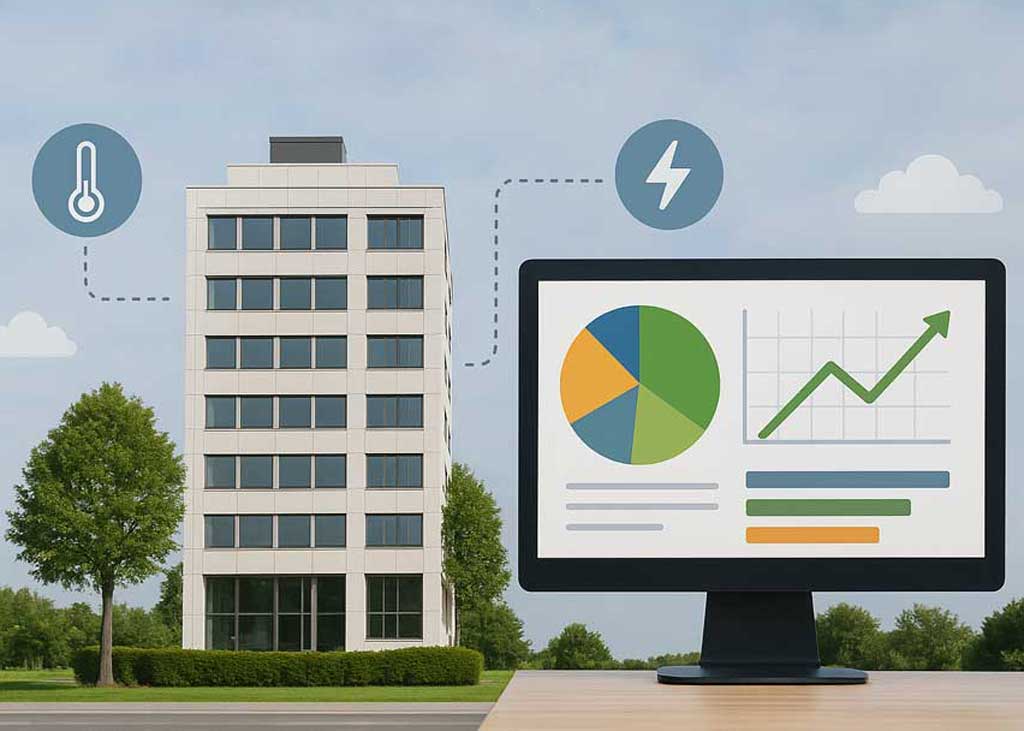Energy bills have become one of the most unpredictable expenses for UK property owners. Whether you’re managing a commercial office, a multi-tenant residential block, or an industrial facility, the chances are you’re paying far more than necessary. The culprit? Inefficient heating, cooling, and lighting systems running when nobody’s watching. This is precisely where a Building Energy Management System comes into play—a technology that’s moved from luxury to necessity faster than most facility managers realise.
What Exactly Is a Building Energy Management System?
A Building Energy Management System (BEMS) is essentially the brain of your building. It’s a computer-based control system that monitors and manages your property’s energy-consuming equipment—from HVAC units and lighting to ventilation and hot water systems.
Think of it as having a tireless facilities manager who never sleeps, constantly adjusting temperatures, switching off unused lights, and ensuring every kilowatt-hour is justified. Modern systems use sensors, smart meters, and sophisticated algorithms to make real-time decisions about energy use.
But here’s what most people don’t realise: a BEMS doesn’t just control equipment. It learns from patterns, predicts usage, and can even integrate with weather forecasts to pre-emptively adjust building conditions. That three-day cold snap predicted for next week? Your BEMS is already planning for it.
Could It Actually Save You Money?
The short answer: absolutely. The Energy Savings Trust suggests that effective energy management can reduce consumption by 10-20%, whilst some facilities see savings up to 30% in the first year alone.
Let’s put that into perspective. A medium-sized office building in London spending £50,000 annually on energy could save £10,000 or more—every single year. For larger facilities or those with particularly inefficient legacy systems, the figures become even more compelling. Those savings don’t just appear once; they compound year after year.
Where the Savings Actually Come From
The magic isn’t in one dramatic change but in hundreds of small optimisations. A BEMS eliminates the classic mistakes: heating empty rooms, running air conditioning whilst windows are open, or maintaining full lighting in barely-used corridors.
It also identifies faults before they become expensive. When a pump starts drawing more power than usual, your BEMS flags it immediately—allowing you to fix a minor issue rather than replace an entire system three months later.
Do You Actually Need One?
Not every building requires a sophisticated BEMS, but the threshold is lower than you might think. Here’s a practical test: if you’re managing a building over 1,000 square metres, employing more than 20 people, or paying annual energy bills exceeding £10,000, you should seriously consider one.
You’re also a prime candidate if your building has multiple zones with different usage patterns, operates outside standard 9-to-5 hours, or houses energy-intensive equipment like server rooms or industrial machinery.
When You Might Not Need One
Small, simple buildings with consistent occupancy patterns and modern, efficient equipment might not see enough return to justify the investment. A small retail shop with straightforward hours and minimal climate control requirements probably doesn’t need the sophistication a BEMS provides.
The Investment Reality
Installation costs vary considerably—from £3,000 for a basic system in a small commercial property to £50,000+ for comprehensive solutions in large, complex buildings. However, with typical payback periods between two to five years, the investment often makes financial sense.
Government incentives and energy grants can also offset initial costs. The Enhanced Capital Allowance scheme, for instance, allows businesses to claim 100% first-year capital allowances on qualifying energy-saving equipment.
What About Older Buildings?
There’s a common misconception that BEMS only work in modern facilities. Whilst newer buildings with integrated building management systems have an easier starting point, older properties often see the most dramatic improvements precisely because they have the most inefficiency to eliminate.
Retrofitting does present challenges—older infrastructure, limited wiring, heritage restrictions—but wireless sensor technology has revolutionised what’s possible in listed buildings and period properties.
The Bottom Line
A Building Energy Management System isn’t just about saving money, though that’s certainly compelling. It’s about taking control of one of your largest operational expenses and ensuring you’re not paying for waste. With energy prices remaining volatile and environmental regulations tightening, the question isn’t really whether you need a BEMS—it’s whether you can afford not to have one.
The technology has matured, the costs have fallen, and the savings are proven. For most commercial and larger residential properties, the return on investment makes this one of the smartest upgrades you can make in 2025.
Featured image: AI generated.




